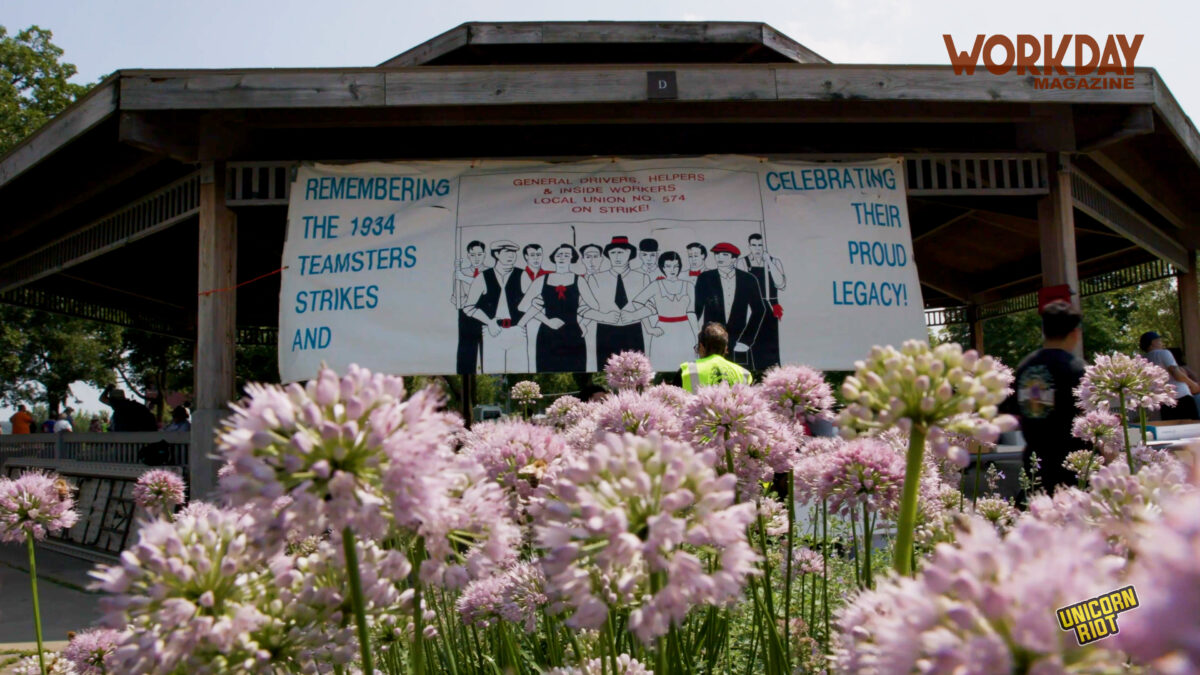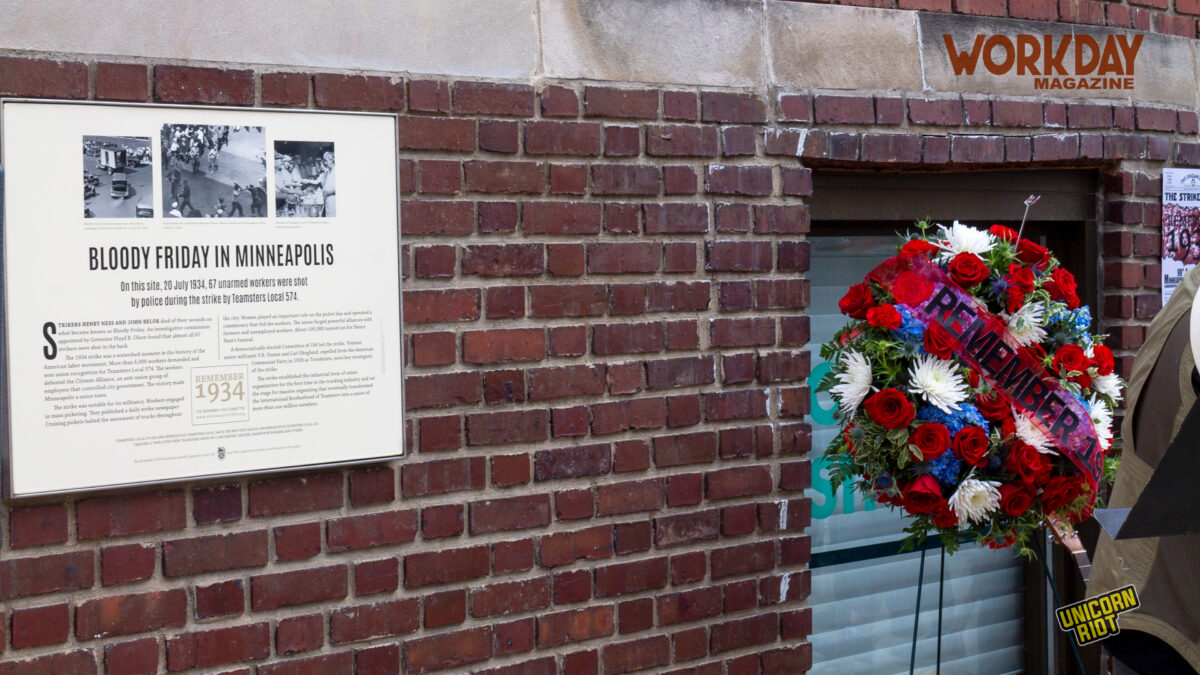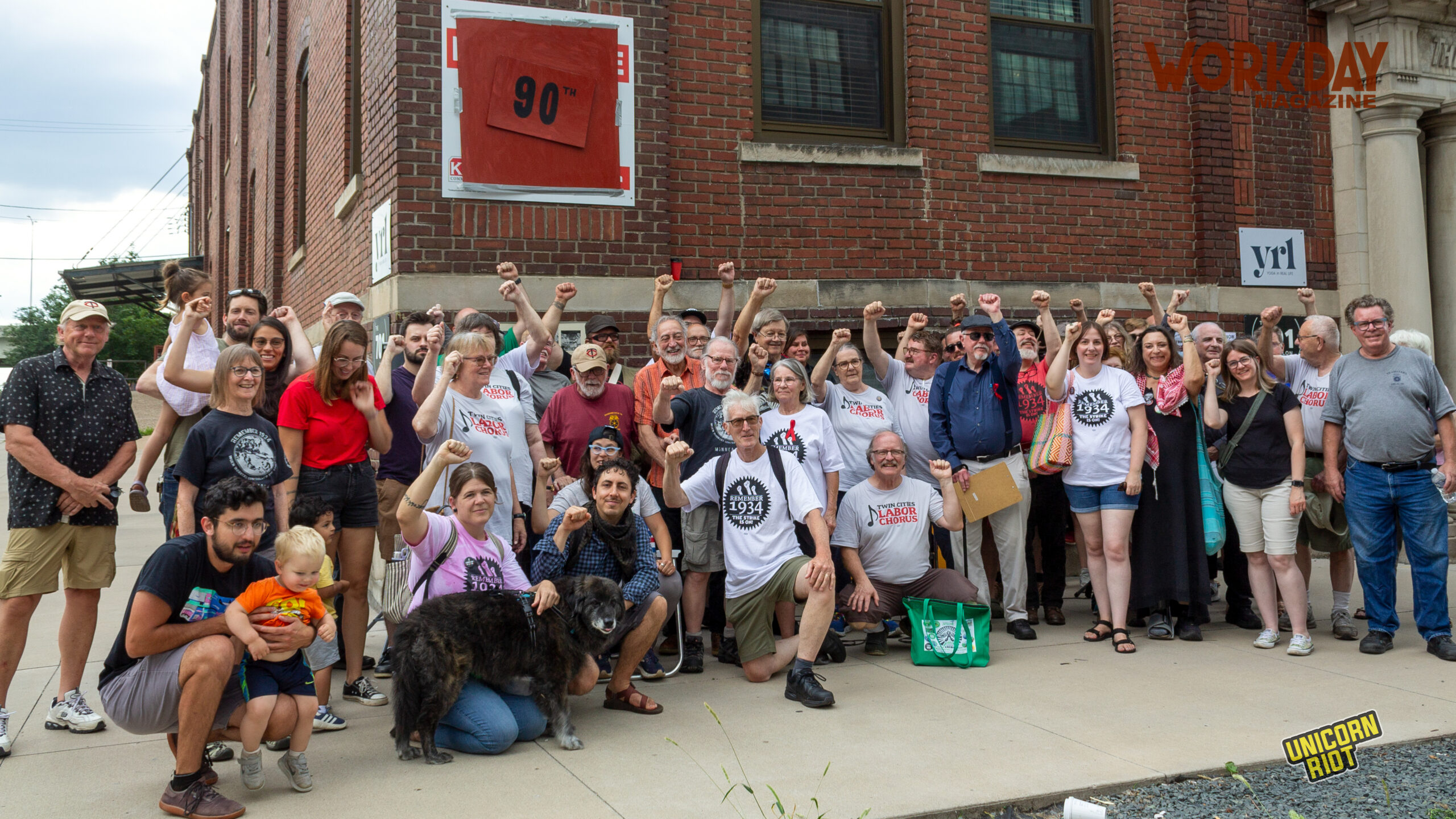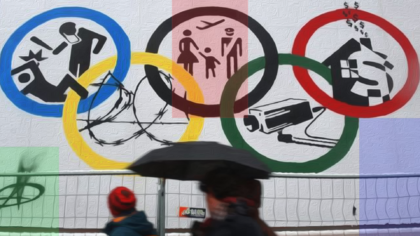The 90th Anniversary of the 1934 Truckers’ Strike Honors Minneapolis’ Militant Labor History
Union members, labor leaders, and descendants of the 1934 Truckers’ Strike honor the 90th anniversary of the historic strike in south Minneapolis.
Minneapolis, MN — On July 27, workers, descendants of the strikers, and the local labor community came together at Wabun Park in Minneapolis to honor the 90th anniversary of the 1934 Truckers’ Strike that brought Minneapolis to a standstill and served as a spark for radical and militant labor struggle across the country.
The strike lasted about three months, as Teamsters Local 574 truckers demanded a fair wage and official recognition of the union. The trucking companies had the support of the Citizens Alliance, an anti-trade union organization that sought to break the strike. The strike’s impact reverberated throughout the city, bringing much of the Minneapolis economy to a halt.
After reaching an agreement, the trucking companies did not honor the terms and workers returned to the streets. On July 20, 1934, the Minneapolis police attacked and opened fire on picketers in the streets of the Warehouse District. Police shot 67 strikers and killed two, Henry Ness and John Belor. The deadly police attack became known as “Bloody Friday.” On July 24, 1934, about 100,000 people lined the streets to honor Henry Ness’ funeral procession in Minneapolis.
There was overwhelming community support for the strikers. Minnesota farmers donated excess crops, wives of strikers prepared food for the picket line, and some community members nursed injured strikers, among other forms of support.
The 1934 Minneapolis Truckers’ Strike also triggered a nationwide militant labor struggle with similar strikes of autoworkers in Toledo, Ohio, longshoremen in San Francisco, and a textile strike in Alabama. The 1934 labor resurgence contributed to the establishment of the National Labor Relations Act in 1935.
The 90th anniversary celebration, organized by the group Remember 1934 with the support of the Teamsters and many other local unions in attendance, was filled with labor folk music, historical storytelling, refreshments, and remembrance. There was also a roll-call honoring the descendants of 1934 strikers, many of whom are the grandchildren of the truckers and their allies, who shared their memories of the strike and how its legacy defined their family and their politics for generations.

The grandchildren of Henry Ness were in attendance — Nadine Ness and Jason Ness. Nadine Ness shared how she first learned of her grandfather’s legacy while reading a newspaper about the strike. Noticing her family shared the same last name as one of the fallen strikers, she asked her father if they were related. He told her that Henry Ness was in fact his father. Nadine Ness then began to do more research and learn more of her grandfather’s history and legacy.
“It was a very difficult time for them. They were constantly harassed by the police because they were Henry [Ness]’s kids,” explains Nadine Ness, on why she believes her father did not share the family history until she asked.
The commemoration, which is an annual tradition, is a nod to the strikers who, in the early years following the strike, would gather to honor their sacrifices and hold gatherings in Minneapolis parks. With rising public support in favor of the militant strikers, the Citizens Alliance, along with support from the city of Minneapolis, attempted to stomp out the strike’s legacy with the creation of the annual corporate-sponsored Aquatennial in 1940, a parade in downtown Minneapolis meant to honor the city’s lakes and rivers, to take place on the same day.
Leading up to the 90th anniversary, the Remember 1934 group hosted a variety of events, including an annual vigil at the site of Bloody Friday in North Loop in Minneapolis, where they placed a wreath and descendants shared stories of their ancestors. Only a small plaque on the side of a building honors this Minnesota labor history.

Other events included an art exhibition in the Minneapolis Public Library downtown, another art exhibit at Hair + Nails gallery in south Minneapolis, a film screening of Labor’s Turning Point at the East Side Freedom Library in St. Paul, and a bike tour of the various historic sites of the strike.
Although the celebration was primarily dedicated to the historical memory of the strikers, support was also in the air for the various current labor struggles and new union drives across the Twin Cities. In particular, attendees showed solidarity with the Minneapolis park workers who had been on strike for about three weeks, with a tentative agreement reached just before the 1934 anniversary. On August 2, Minneapolis park workers approved a new contract with the Park and Recreation Board.
The workers’ rights which benefit people in the U.S. today stem from, in part, the massive strike in 1934. Rubin Latz, who was present at the 90th anniversary celebration, is a descendent and namesake of Rubin Latz, his grandfather, who co-coordinated food distribution for strikers and was a member of the dry cleaners and garment workers union. He reflected on the legacy of the strike, “Vacation, 8-hour work days, the right to bargaining collectively, all ties back to ‘34.”
This is a Workday Magazine and Unicorn Riot collaboration.
Minneapolis Labor History Honored at 85th Anniversary of 1934 Strike [2019]
Follow us on X (aka Twitter), Facebook, YouTube, Vimeo, Instagram, Mastodon, Threads, BlueSky and Patreon.
Please consider a tax-deductible donation to help sustain our horizontally-organized, non-profit media organization:



